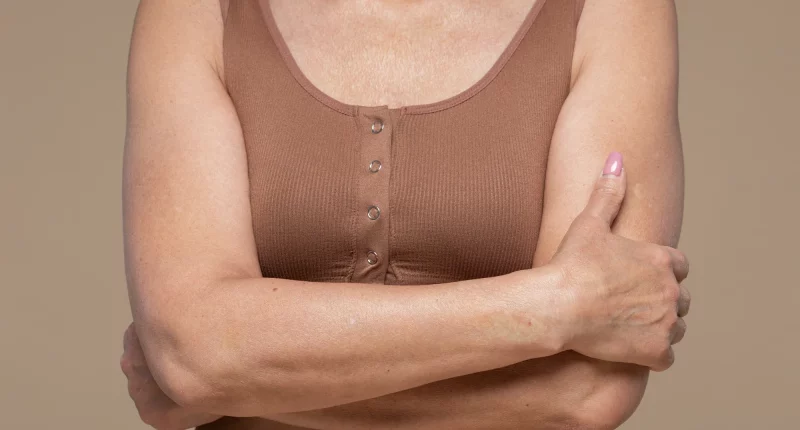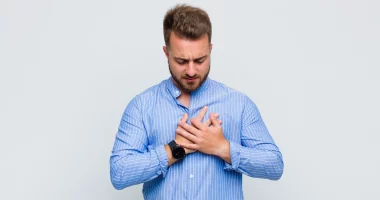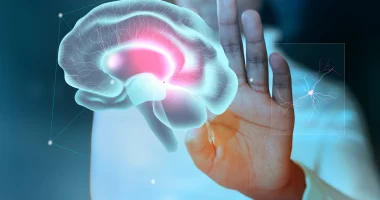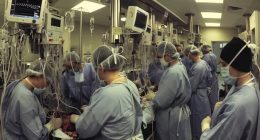Breast cysts are fluid-contained sacs that commonly grow in breast tissue and can differ in size. They are often smooth, oval, or round shaped, and usually feel rubbery or firm. These cysts can be single or multiple and are typically benign (non-cancerous). While they can lead to breast sensitivity or pain, particularly before menstruation, they generally don’t need treatment unless they are large or painful. Breast cysts are commonly determined through clinical examination, imaging tests such as ultrasound, or sometimes by fine-needle aspiration to drain the substance for testing. Regular observing or drainage may be suggested if they cause discomfort or if there are concerns about modifications in appearance or size.
Types
There are several types of breast cysts, classified based on their features and composition:
- Simple cysts: These are the most frequent type, filled with slightly cloudy or clear fluid. They are usually round, smooth, and well-defined on imaging.
- Complex cysts: These cysts may have thicker substances or be filled with particles, debris, or internal echoes on imaging. They might appear more irregular or have thicker linings compared to simple cysts.
- Hemorrhagic cysts: These cysts contain blood, giving them a brownish or reddish appearance. They may be linked to trauma or bleeding within the cyst.
- Septated cysts: These cysts have internal septations or partitions that divide the cyst into compartments. They can vary in complexity and may need further evaluation to eliminate solid components.
- Dilated duct: A galactocele is a cyst-like mass filled with milk. It can develop during breastfeeding or lactation and may persist after weaning.
Each type of breast cyst may have different characteristics in imaging studies like mammography or ultrasound, and the management approach can vary based on these findings.
Symptoms
Breast cysts commonly present with several noticeable symptoms. Many females with breast cysts experience multiple lumps or palpable lumps that are round, smooth, and movable within the breast tissue. These lumps can differ in size from small to some centimeters in diameter. Usually, breast cysts may lead to localized sensitivity or pain, which often intensifies just before menstruation due to hormonal changes. This discomfort can range from mild to moderate and may subside after menstruation ends. Some women may also notice breast swelling or modifications in breast texture near the place of the cysts.
In addition to physical symptoms, breast cysts can occasionally lead to psychological distress or anxiety, particularly when they are first discovered. This is often due to concerns about the likelihood of breast cancer, although the vast majority of breast cysts are benign. It’s important for people to seek medical evaluation if they notice any new breast lumps or changes in their breast tissue, as healthcare providers can perform examinations and imaging tests to accurately diagnose and manage any cysts’ existence.
Causes
The exact causes of breast cysts are not fully understood, but they are believed to be associated with hormonal changes that happen during the menstrual cycle. Breast cysts often develop in response to fluctuations in progesterone and estrogen levels, especially in women of reproductive age. These hormones can stimulate the breast tissue, causing the milk ducts to enlarge and produce fluid. This fluid buildup forms a cyst, which may vary in number and size over time.
Other factors that may contribute to the development of breast cysts include:
- Hormonal medications: The use of hormone replacement therapy, birth control pills, or fertility treatments may affect hormone levels and increase the possibility of cyst formation.
- Age: Breast cysts are more common in women aged 30 to 50, especially approaching menopause when hormonal changes are more pronounced.
- Personal history: Women who have previously experienced breast cysts are more likely to develop them again in the future.
- Diet and lifestyle: High intake of caffeine or fat in the diet has been suggested as a potential factor, although research on these associations is mixed.
While breast cysts are typically benign and not associated with an increased chance of breast cancer, any new or unusual breast modifications should be evaluated by a healthcare provider to eliminate other conditions and provide appropriate management.
Treatment
Treatment for breast cysts depends on their size, signs, and whether they are causing discomfort or concern. In many cases, breast cysts do not need treatment and may resolve on their own without treatment. However, if a cyst is causing significant discomfort or if there is uncertainty about its nature, several treatment options may be considered:
Observation
Often, breast cysts are simply observed in time, especially if they are small, asymptomatic, and found to be fluid-contained and clearly defined on imaging tests. Regular follow-up examinations may be suggested to check for modifications in appearance or size.
Drainage
If a cyst is large, painful, or persists despite conservative measures, your healthcare provider may suggest draining the substance from the cyst utilizing a fine needle aspiration. This procedure can provide immediate relief from discomfort and can also be used to collect substances for further analysis to confirm the nature of the cyst.
Medications
In some cases, oral contraceptives or other hormonal medications may be recommended to help regulate hormonal fluctuations that contribute to cyst formation, particularly if a woman experiences recurrent cysts associated with her menstrual cycle.
Surgical Removal
Surgical removal of breast cysts is uncommonly necessary but may be considered if the cyst is large, or complex, or if there are concerns about cancerous changes. This procedure involves removing the cyst and possibly surrounding tissue, and it is usually reserved for cases where other treatments have been ineffective or when there is suspicion of cancer.
Lifestyle Changes
Making adjustments like reducing caffeine consumption, maintaining a healthy weight, and wearing a supportive bra can sometimes alleviate breast discomfort associated with cysts.
Before pursuing any treatment, it’s important to discuss options with a healthcare provider who can provide personalized recommendations based on the specific characteristics of the breast cysts and individual health factors. Regular breast self-examinations and mammograms as suggested by healthcare providers are crucial for monitoring any changes in breast tissue over time.
Prevention
Preventing breast cysts entirely is not always possible, as their development is primarily influenced by hormonal factors that are difficult to control completely. However, some lifestyle choices may help decrease the chance or seriousness of breast cysts. Maintaining a healthy weight, engaging in regular physical activity, and limiting alcohol consumption are general suggestions that can enhance overall breast health.
Additionally, managing stress levels and incorporating a nutritious diet rich in fruits, vegetables, and whole grains may support hormonal balance and overall well-being. For women prone to breast cysts, discussing hormonal birth control options with a healthcare provider and being mindful of caffeine intake may also be beneficial. Regular breast self-exams and routine check-ups with healthcare providers can aid in the early detection and management of any changes in breast tissue.
Summary
Breast cysts are fluid-contained sacs that commonly occur in women, often due to hormonal changes during the menstrual cycle. They usually present as smooth, movable lumps in the breast tissue, causing occasional sensitivity or pain, especially before menstruation. While usually non-cancerous, they can cause anxiety and require evaluation to eliminate other conditions.
Treatment options vary from observation and symptom management to drainage or surgical elimination for larger or persistent cysts. Prevention strategies include maintaining a healthy lifestyle, managing stress, and discussing hormone-related medications with a healthcare provider. Regular breast self-exams and check-ups are crucial for early detection and monitoring of any breast changes.









